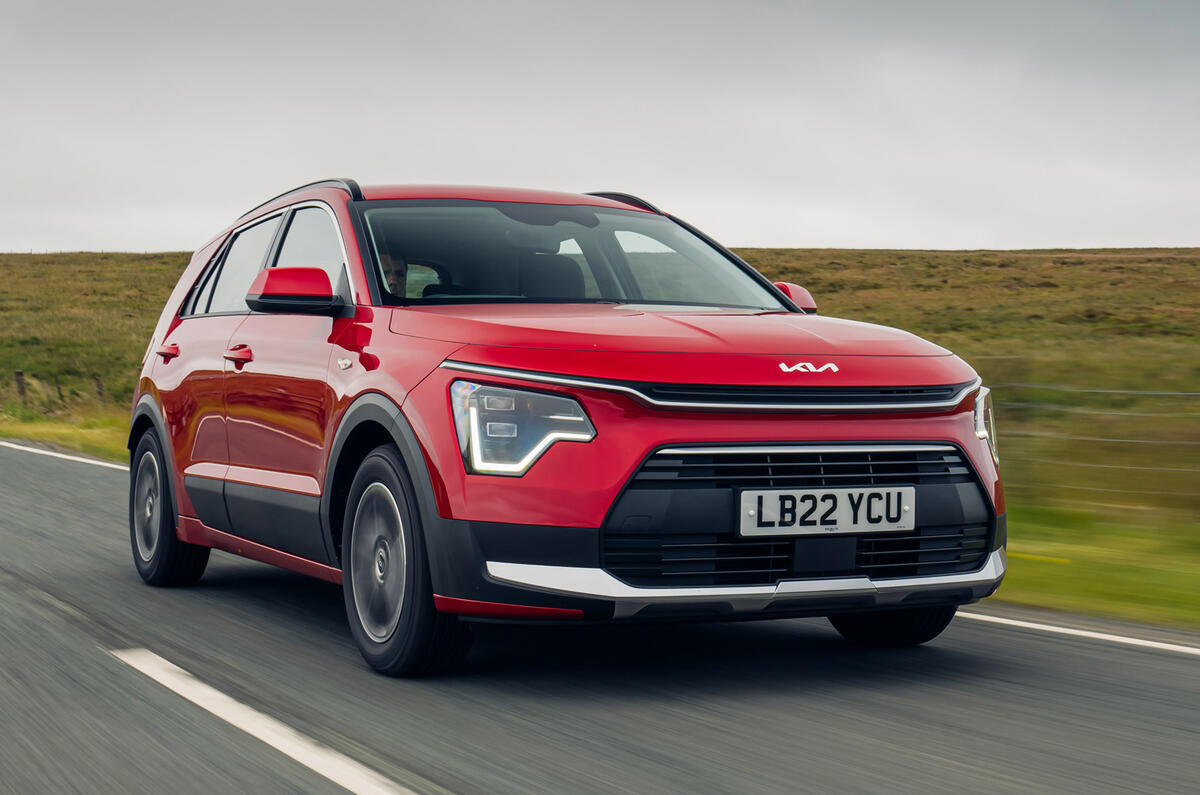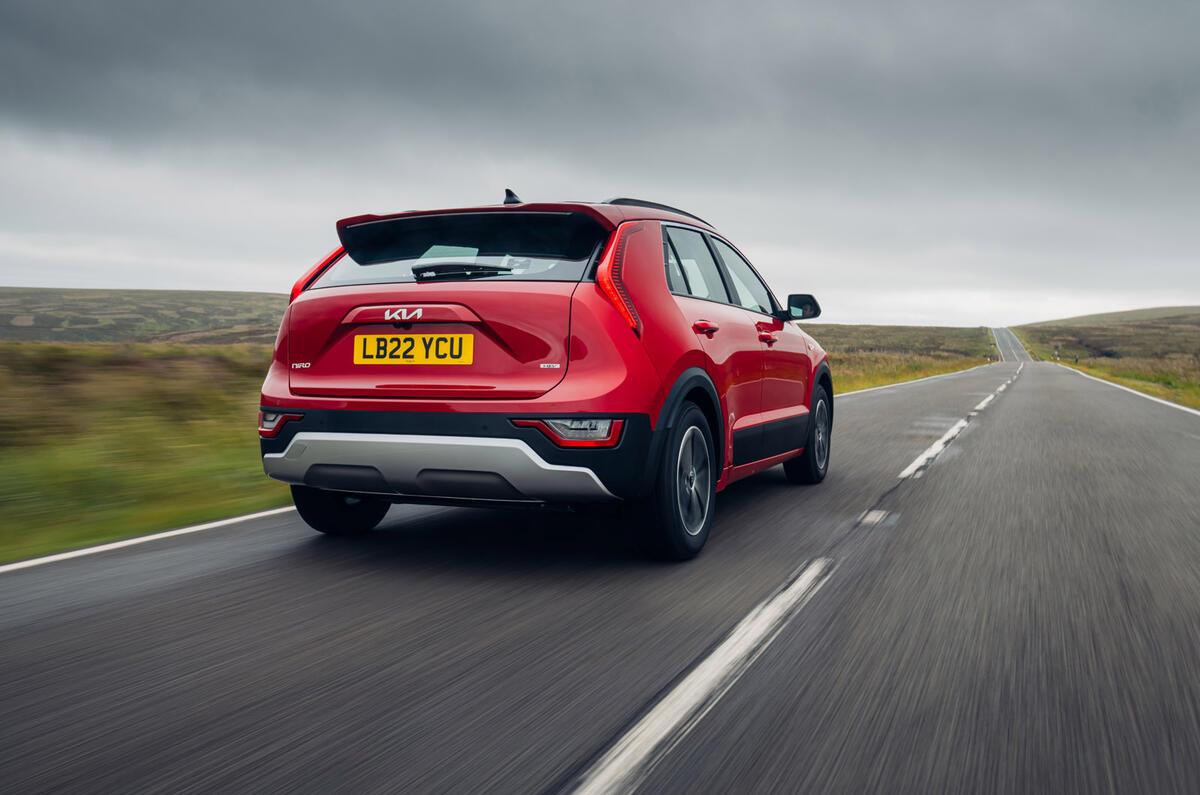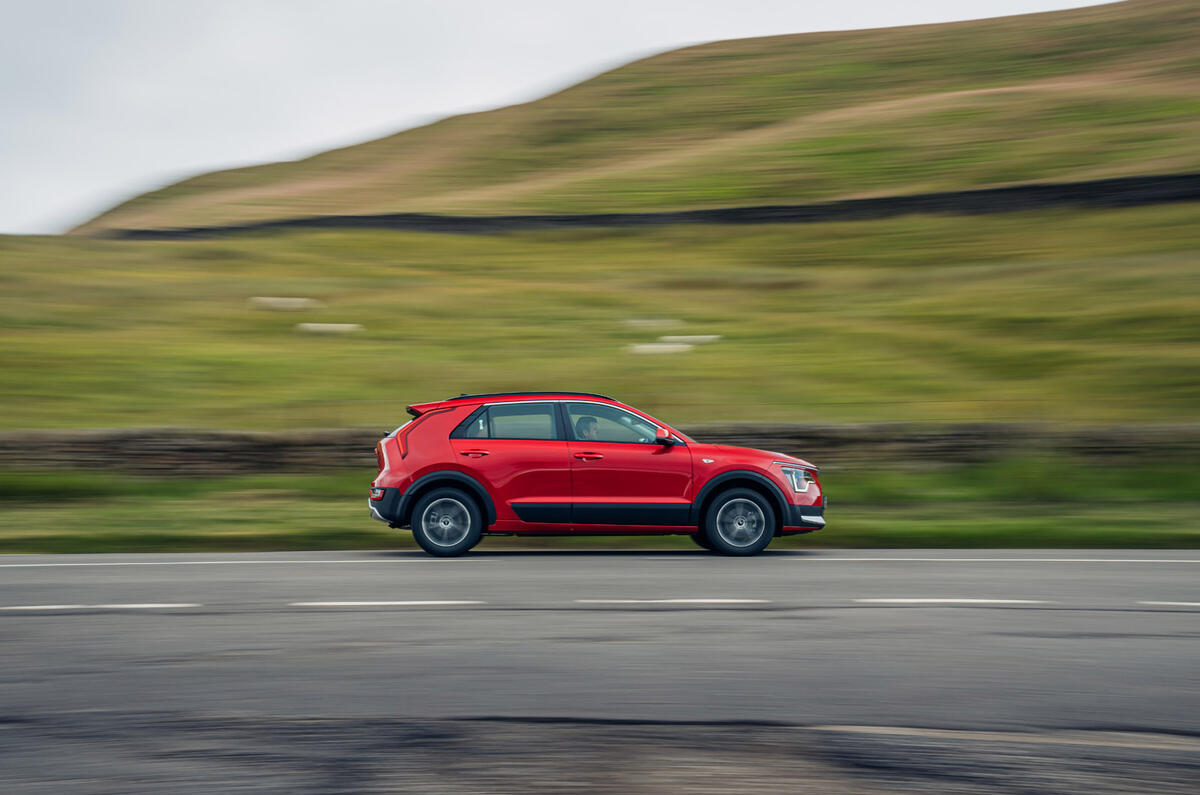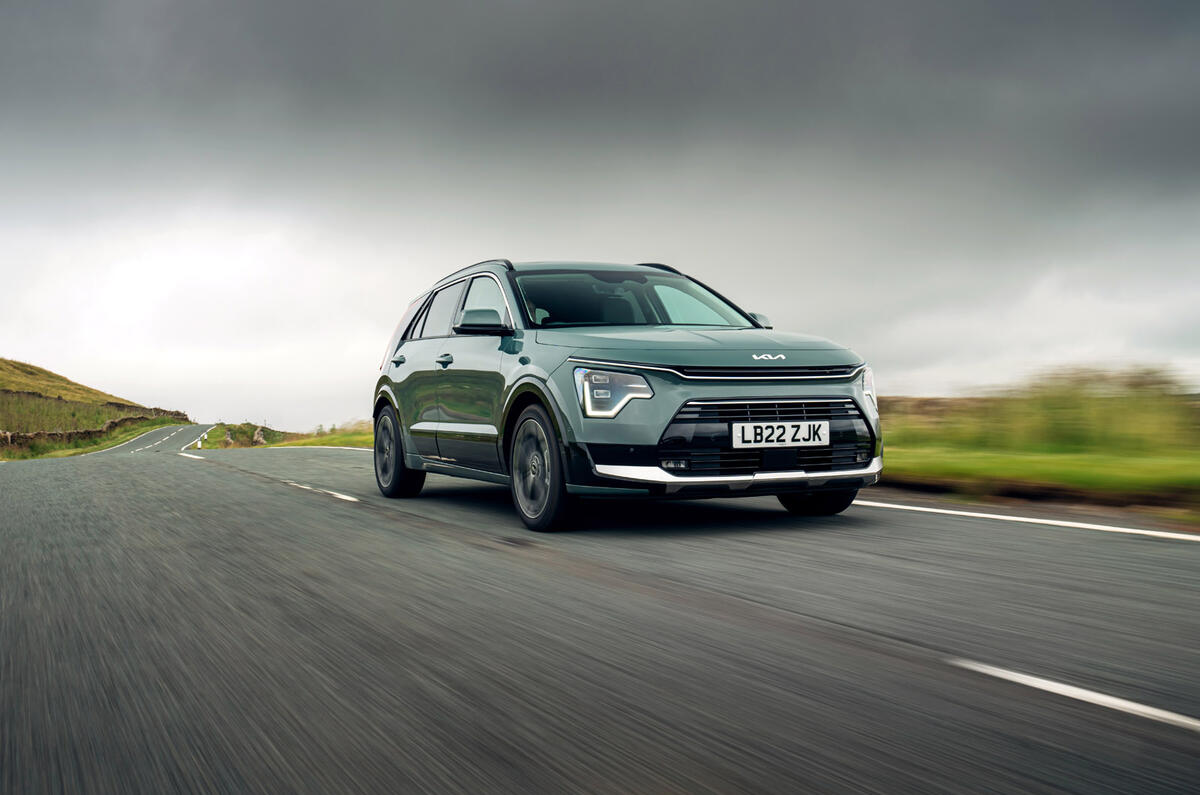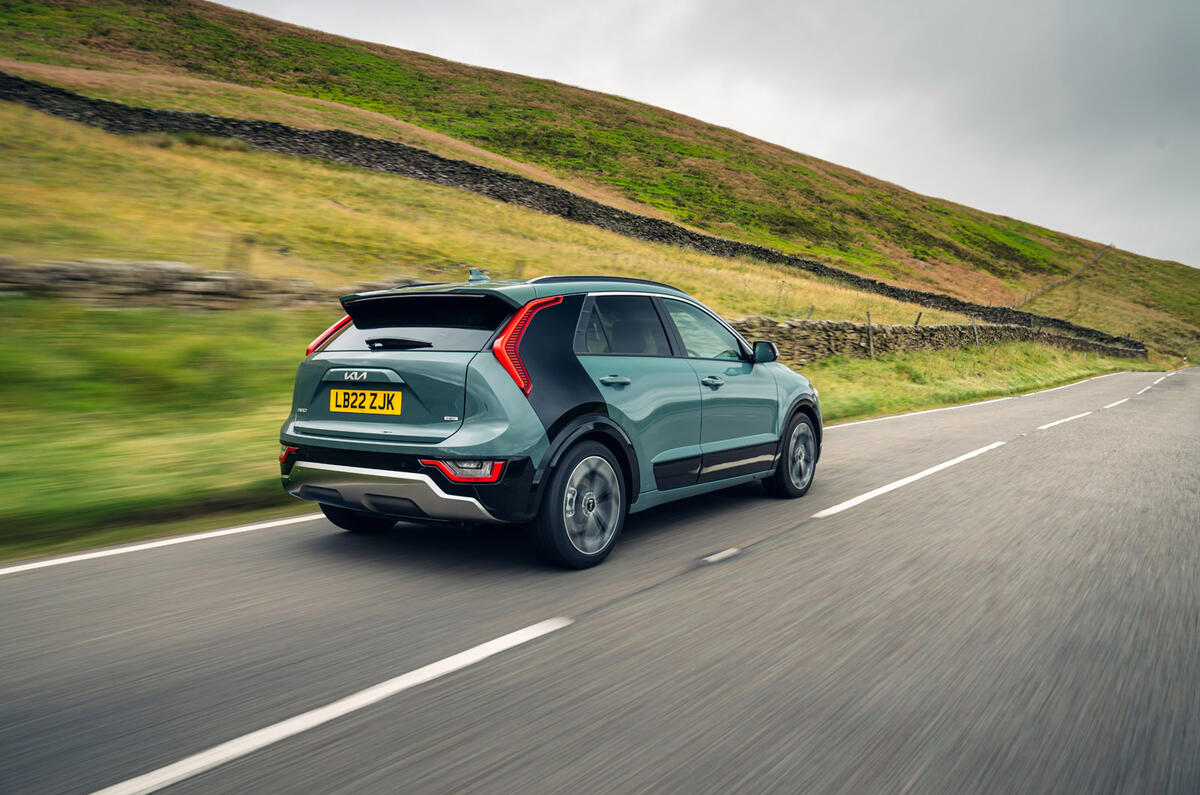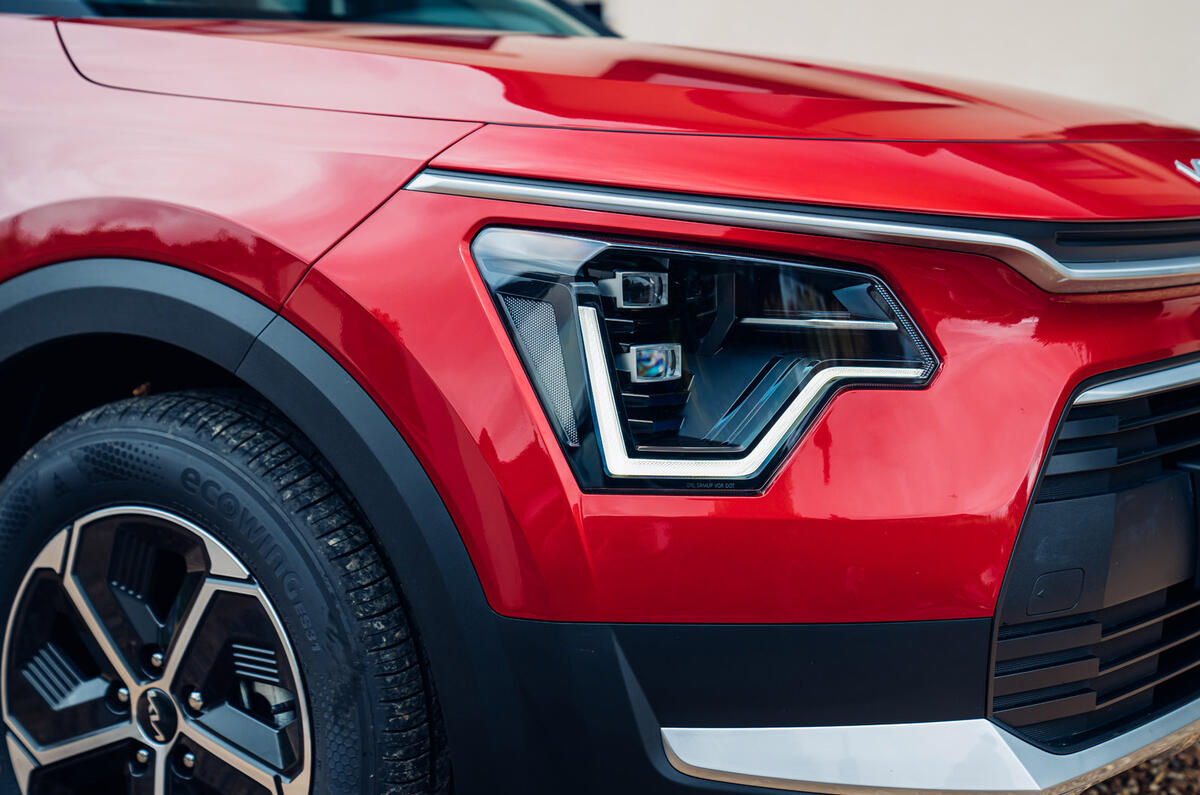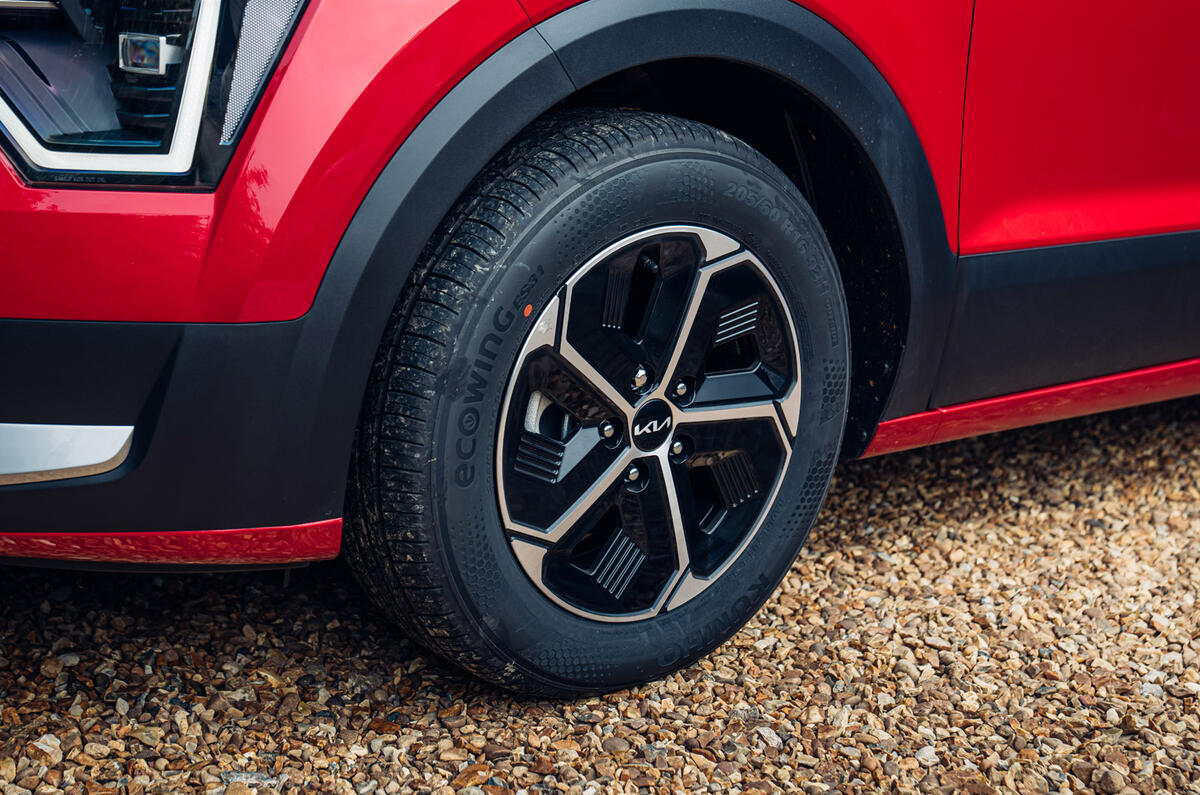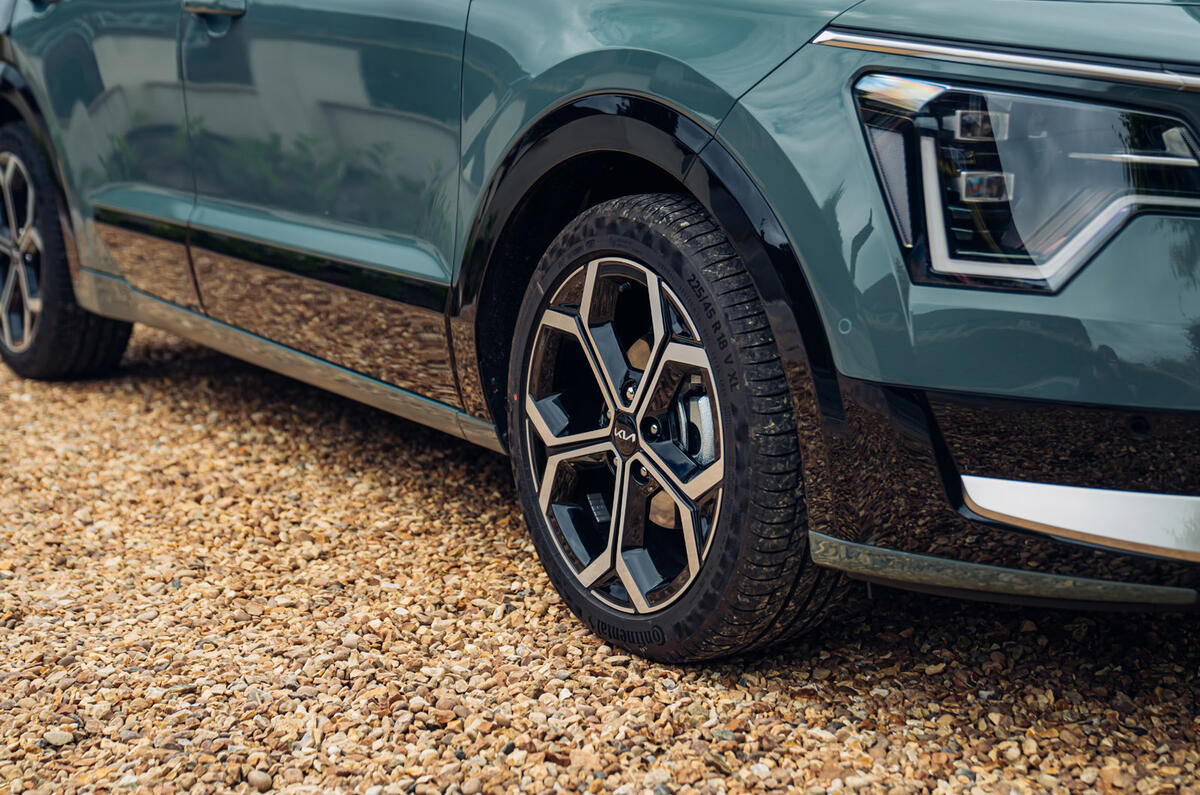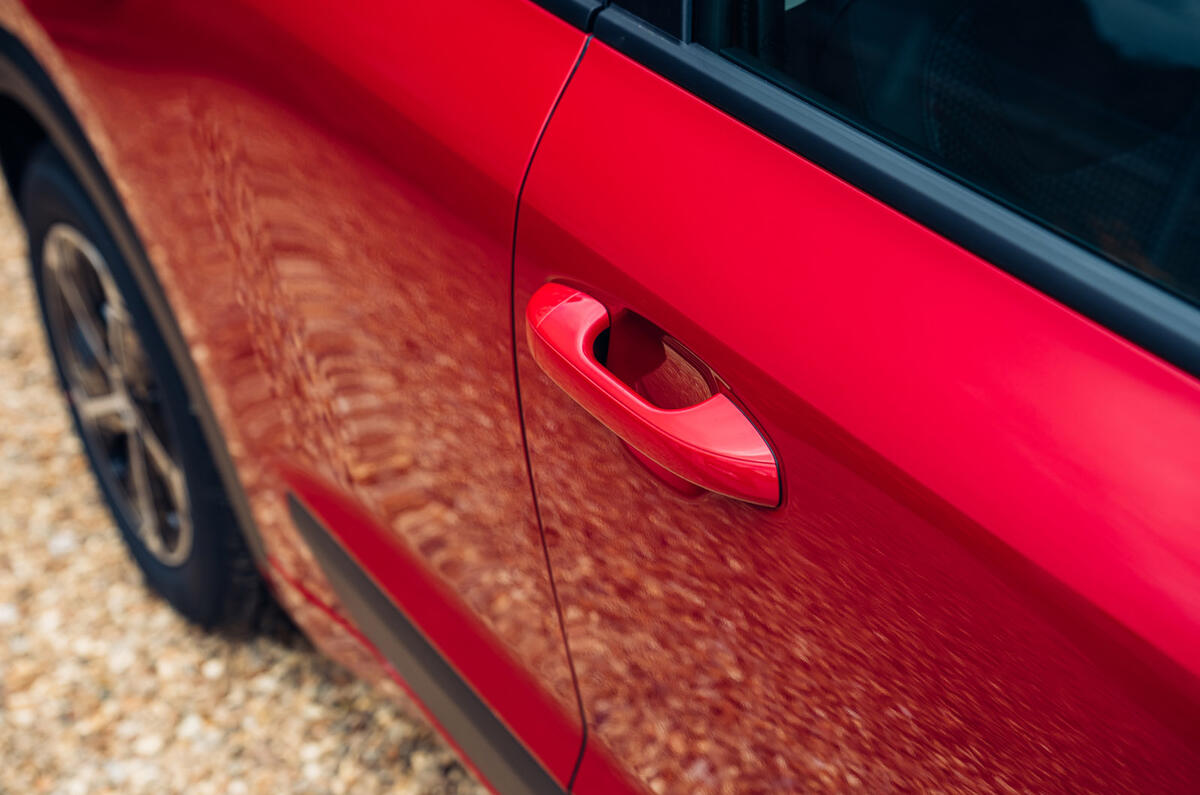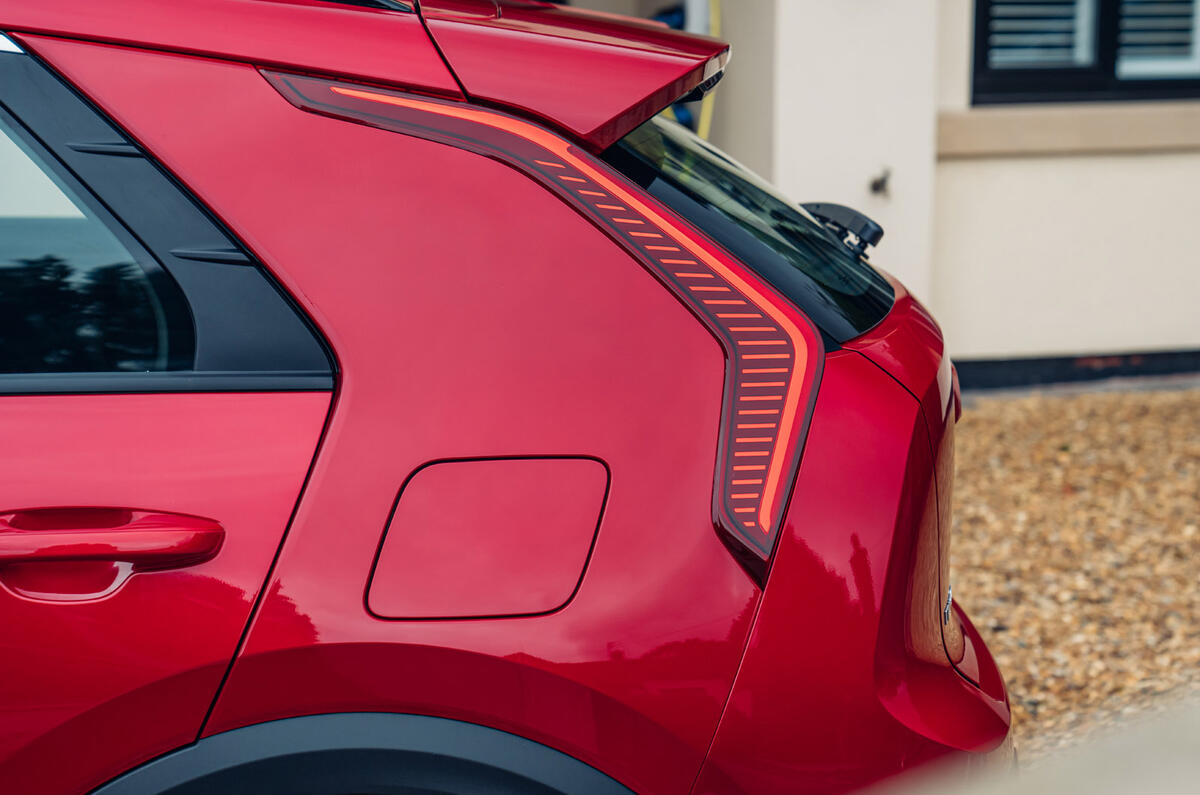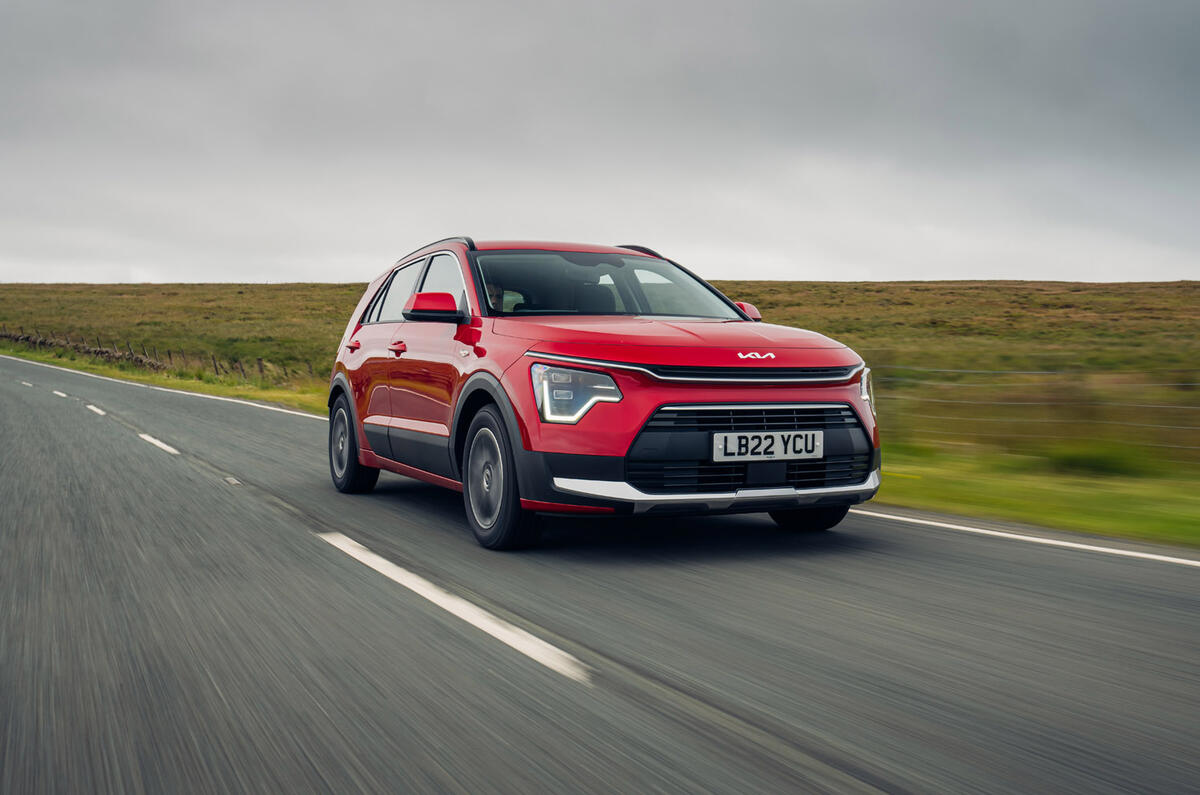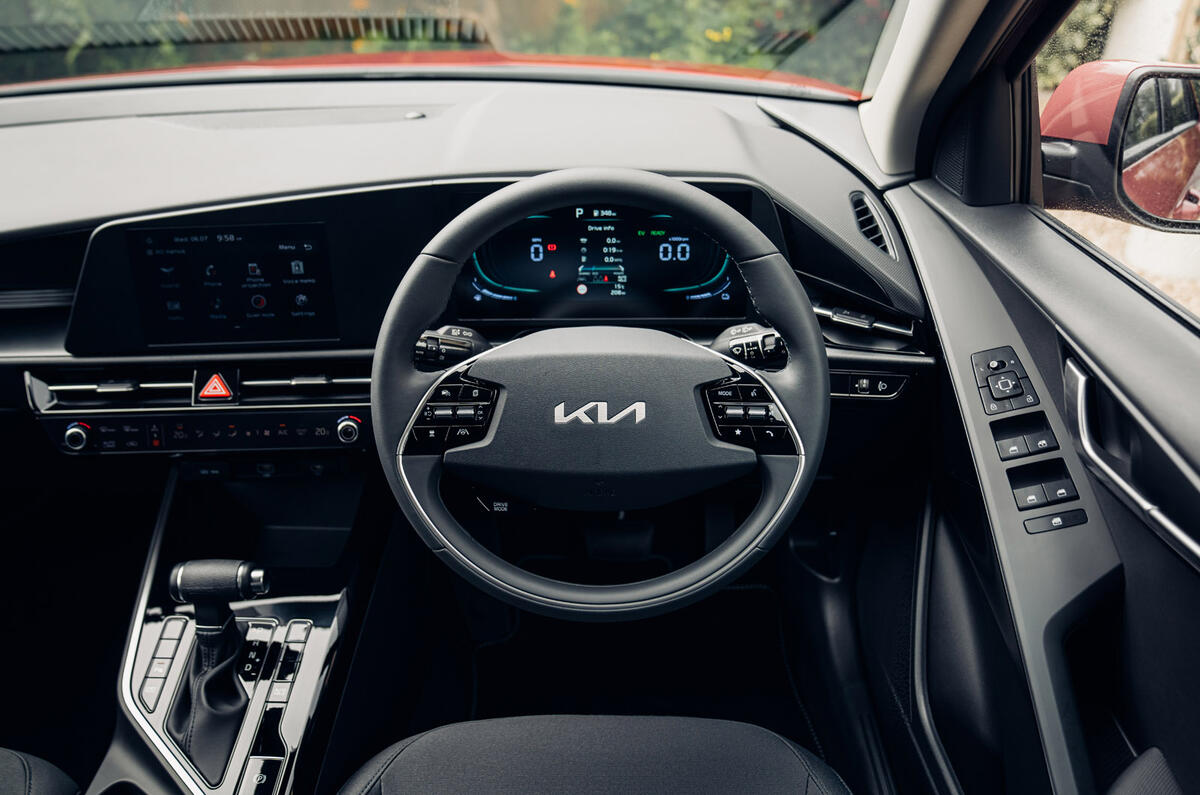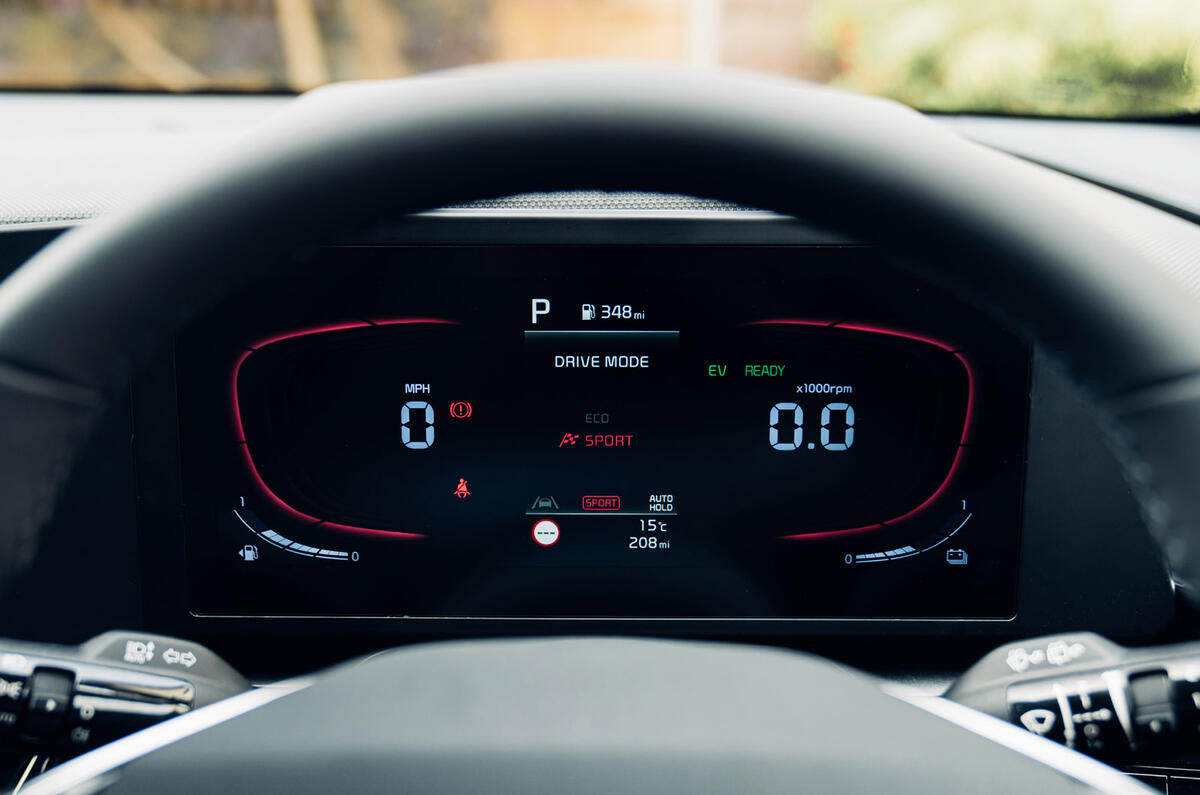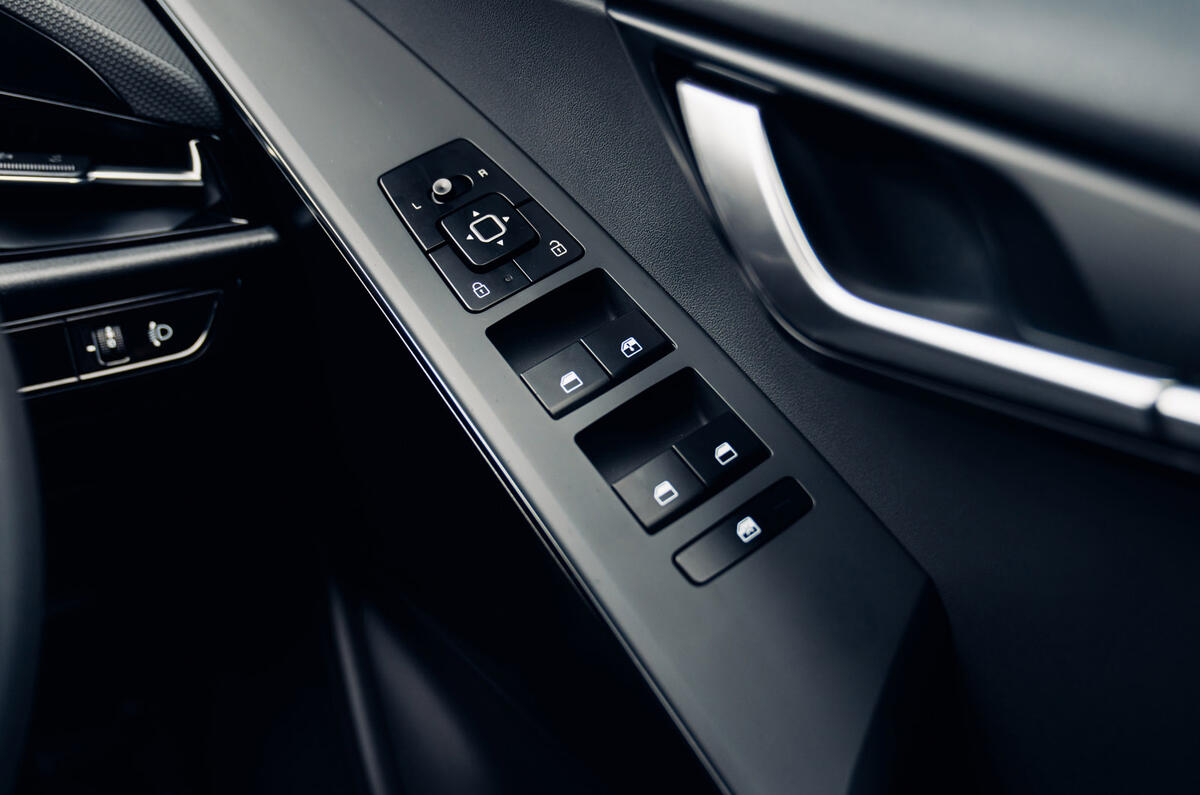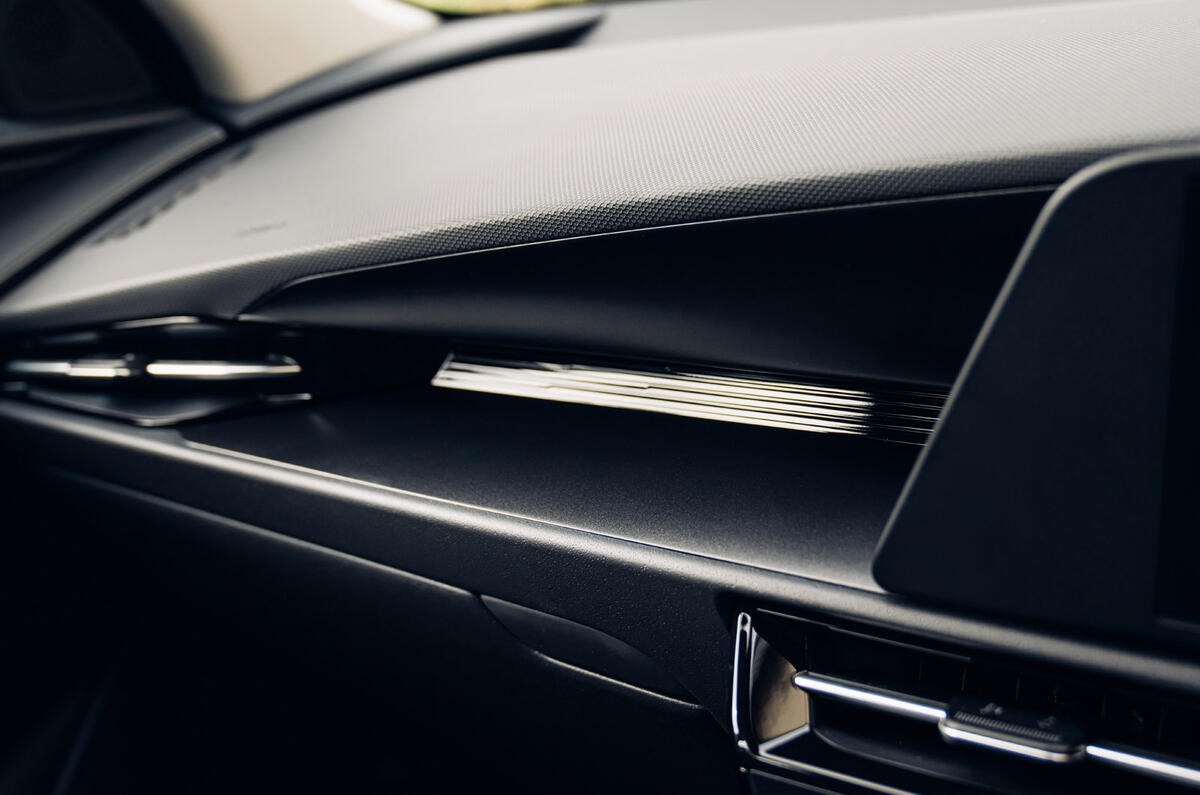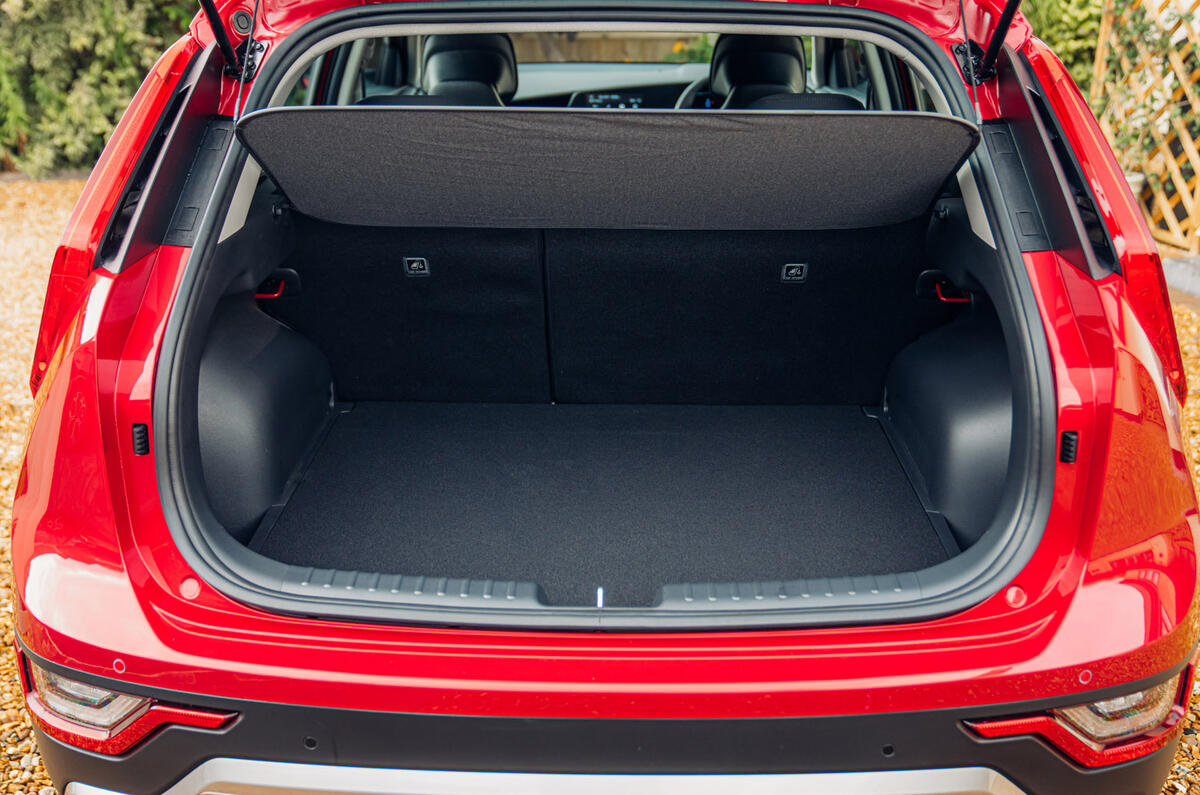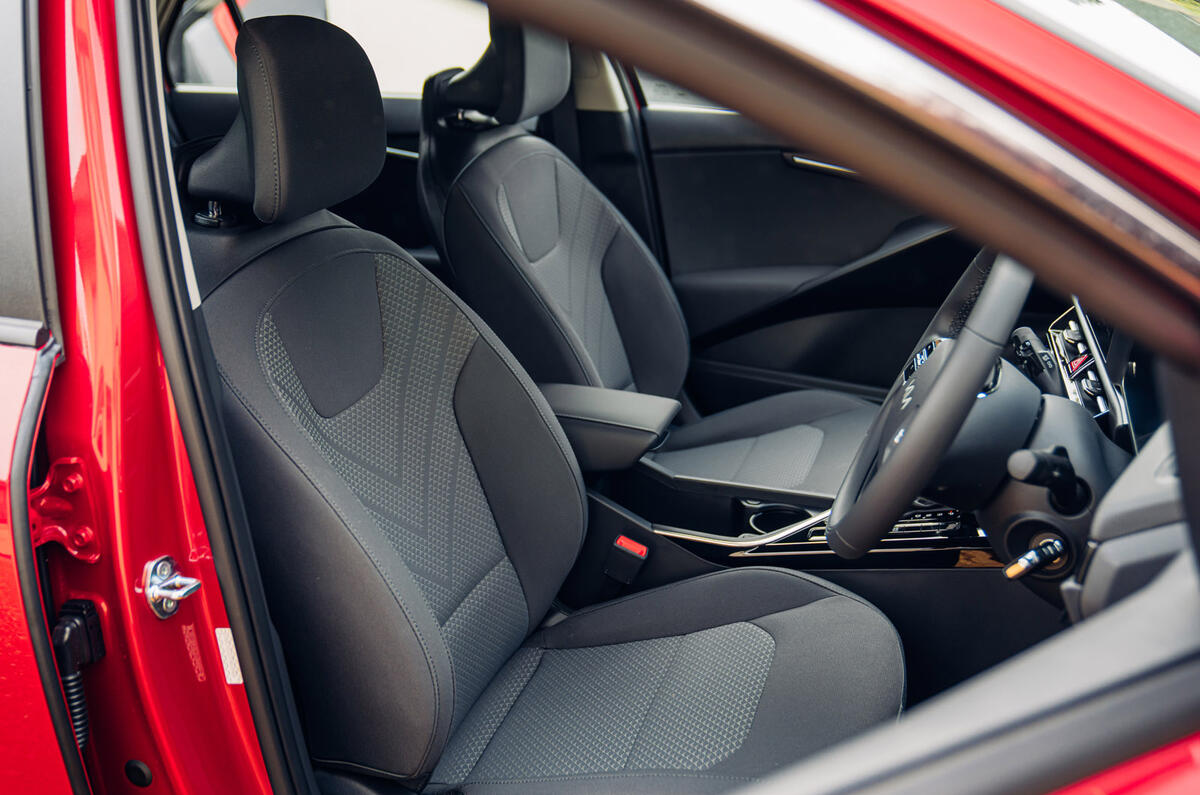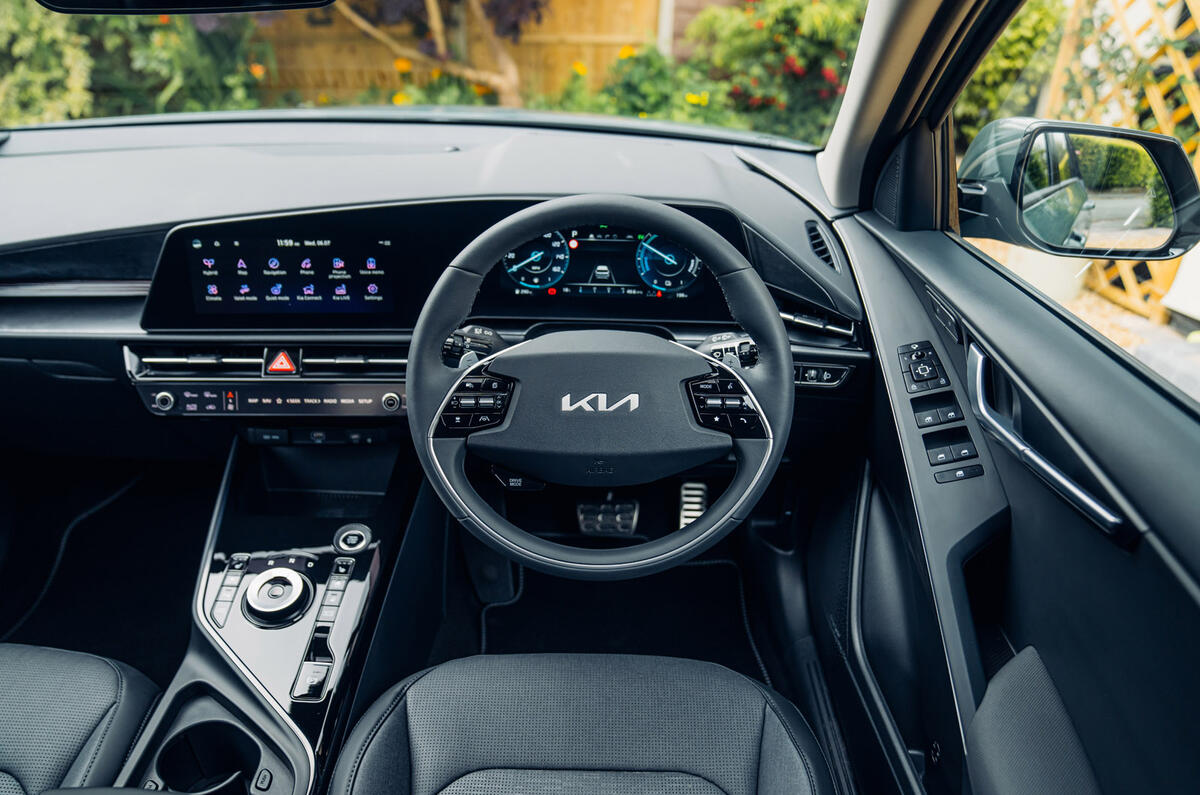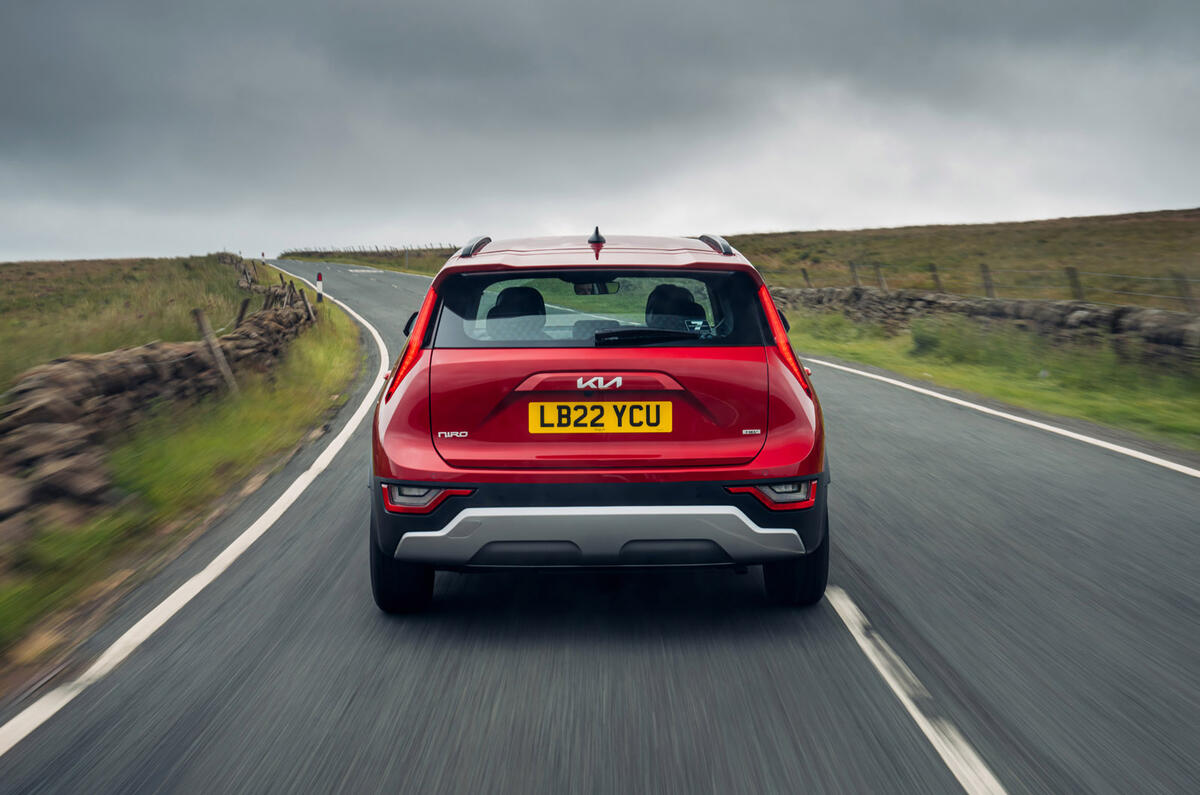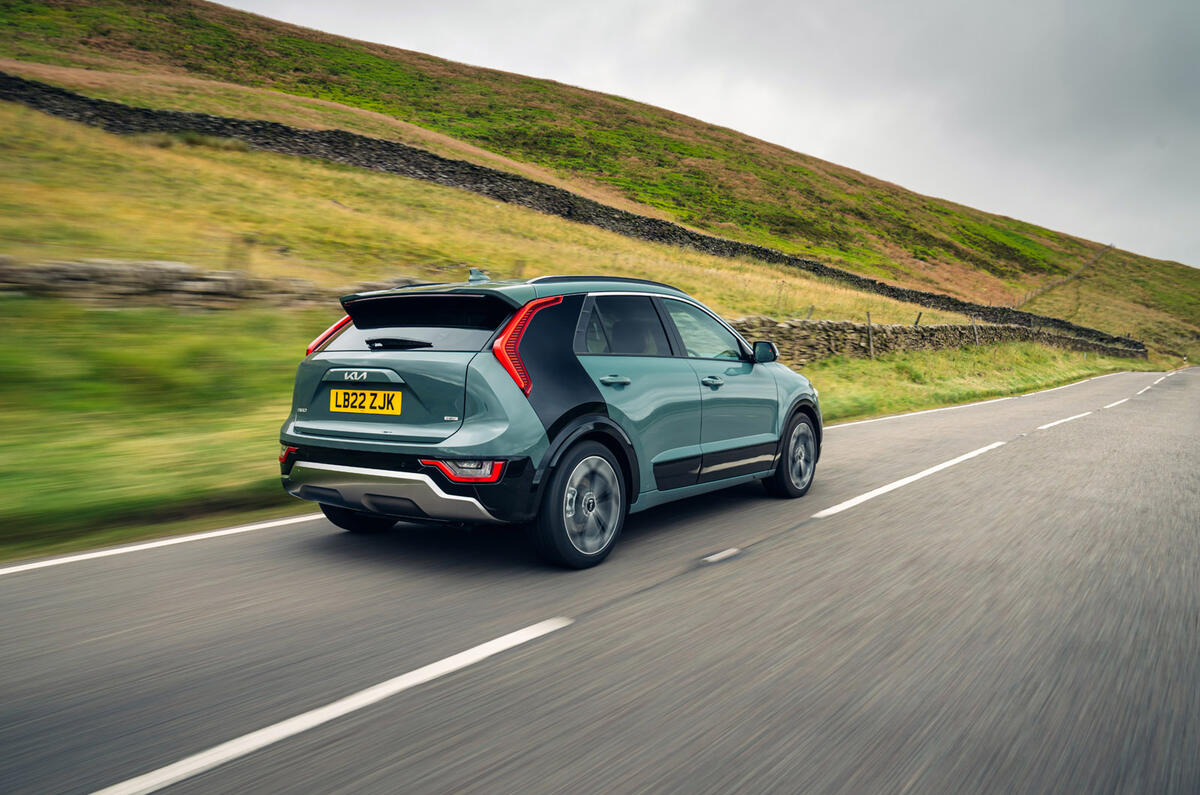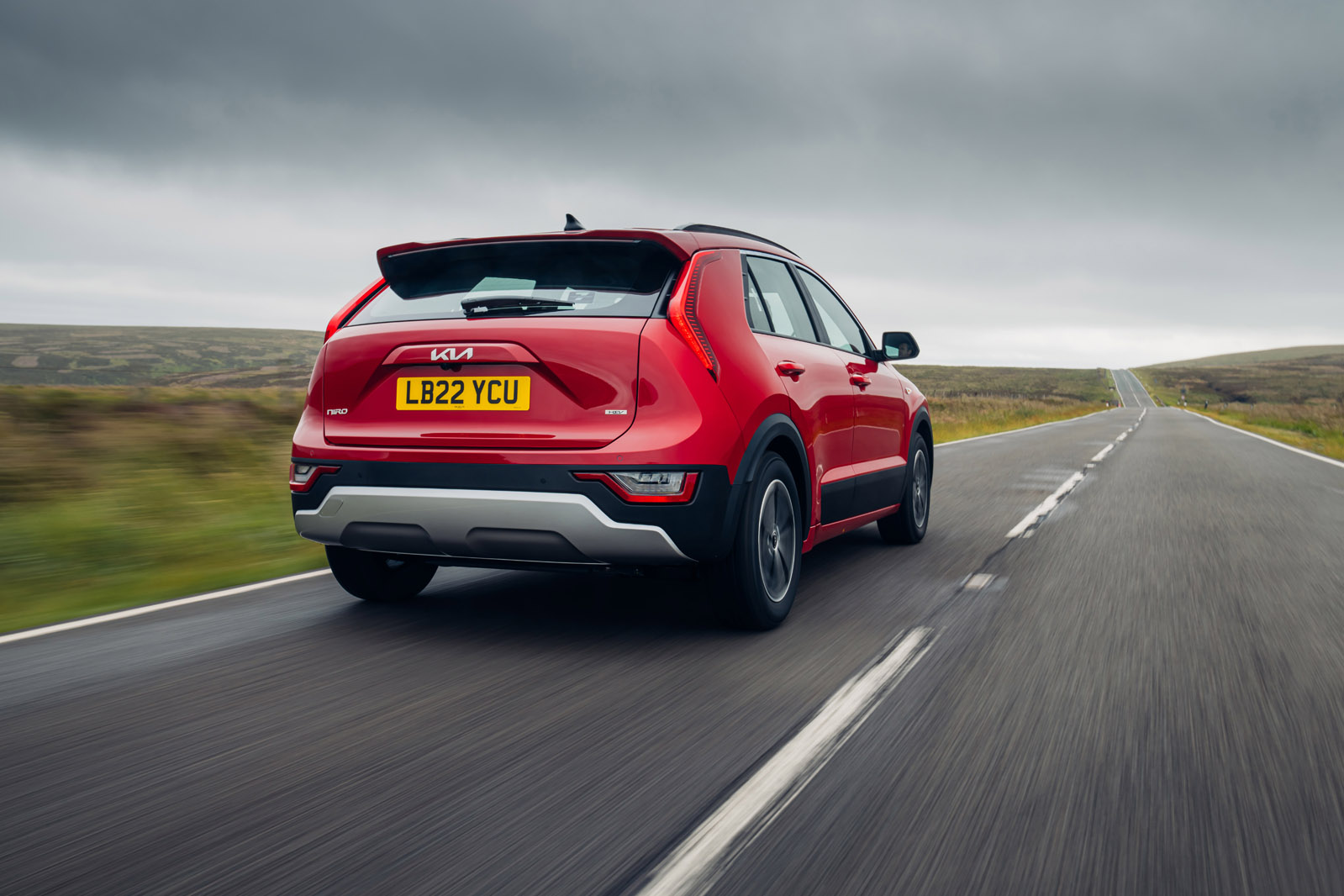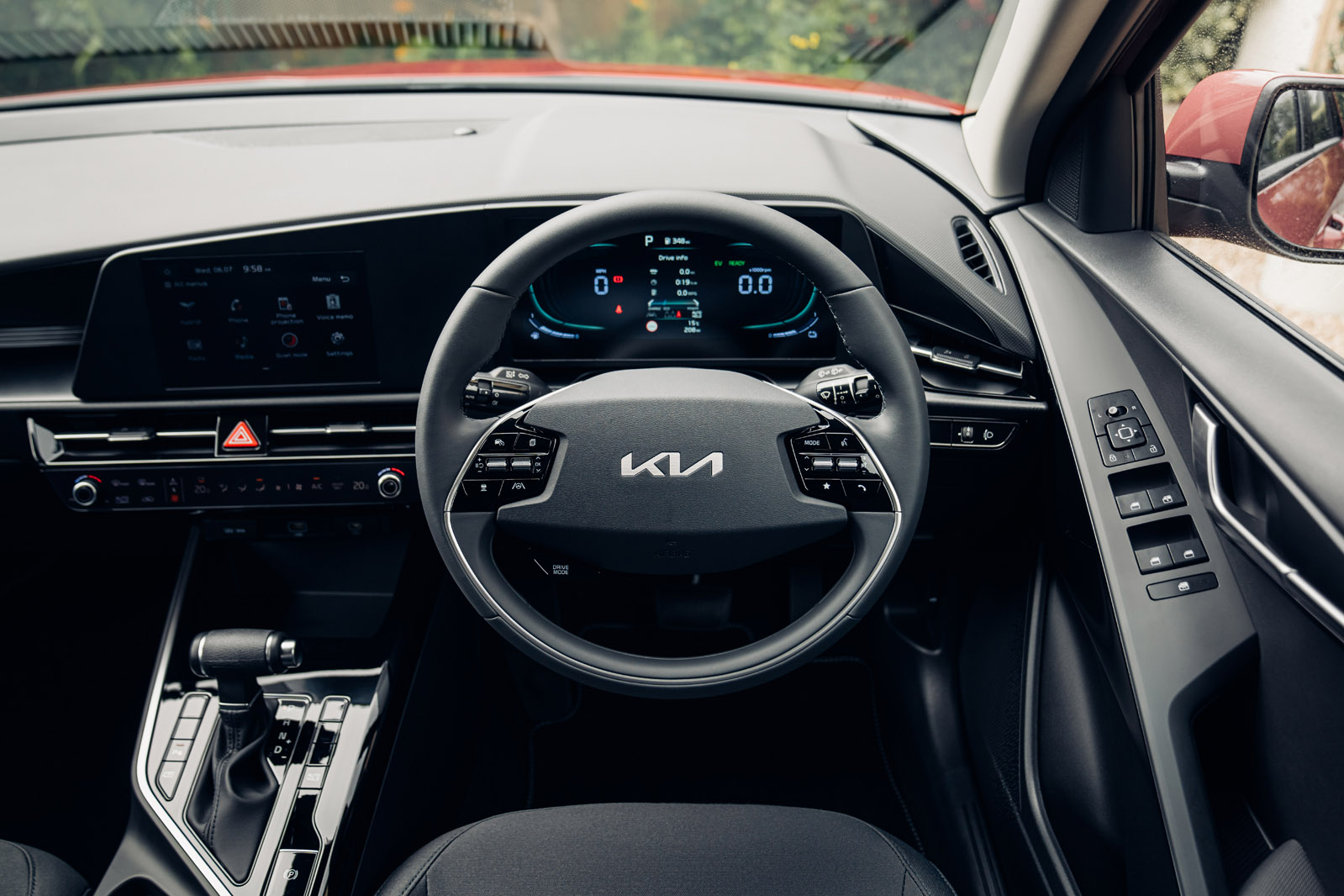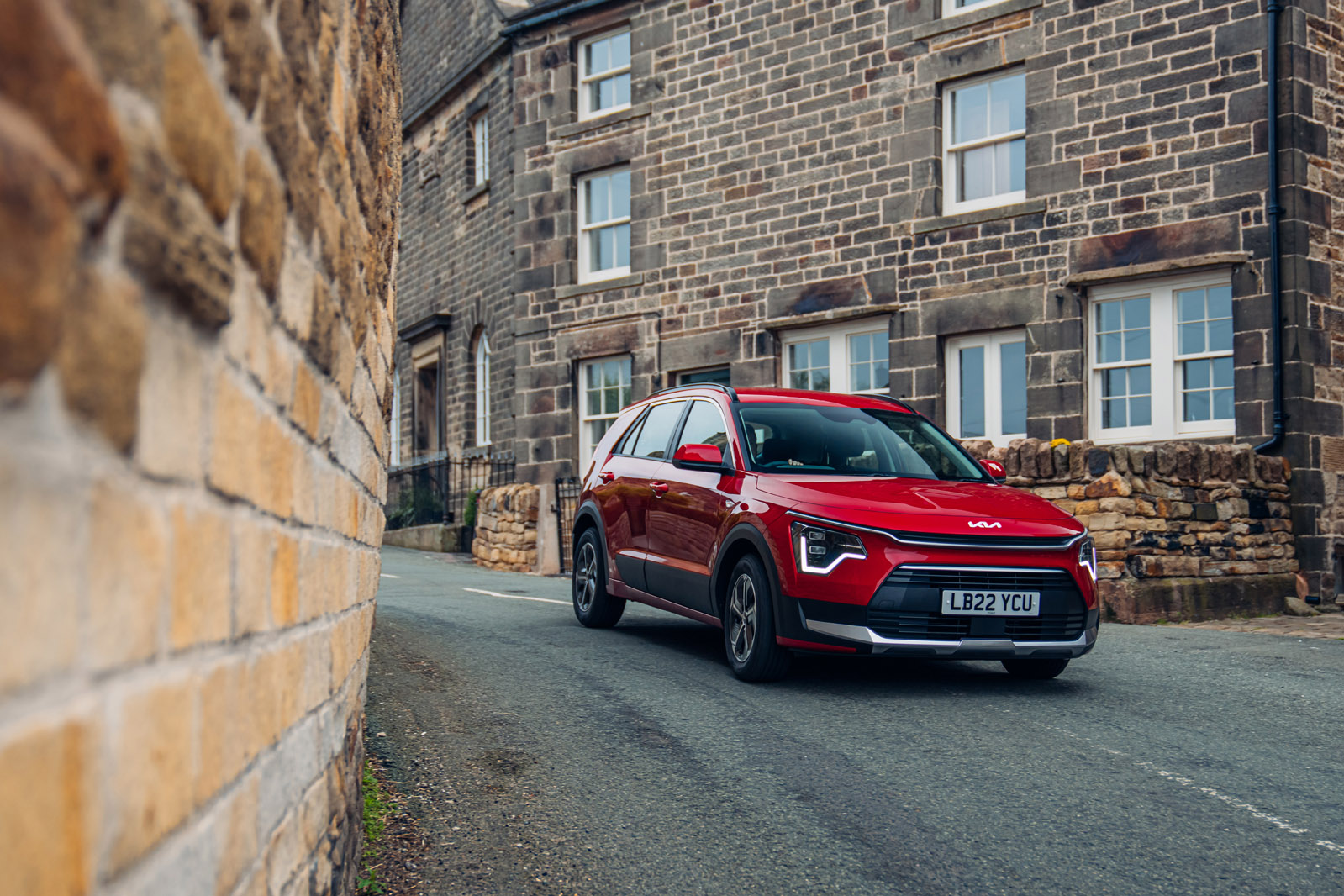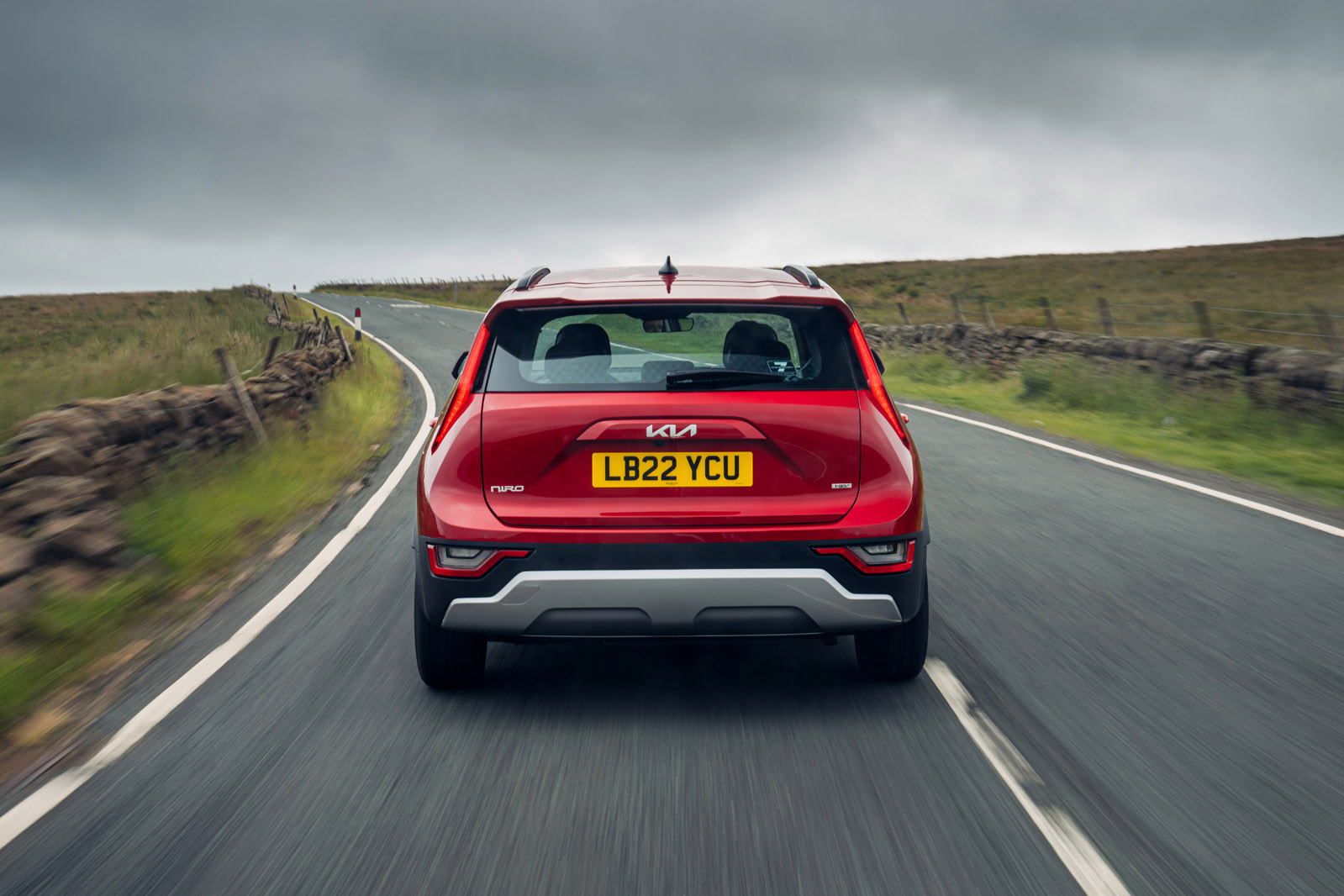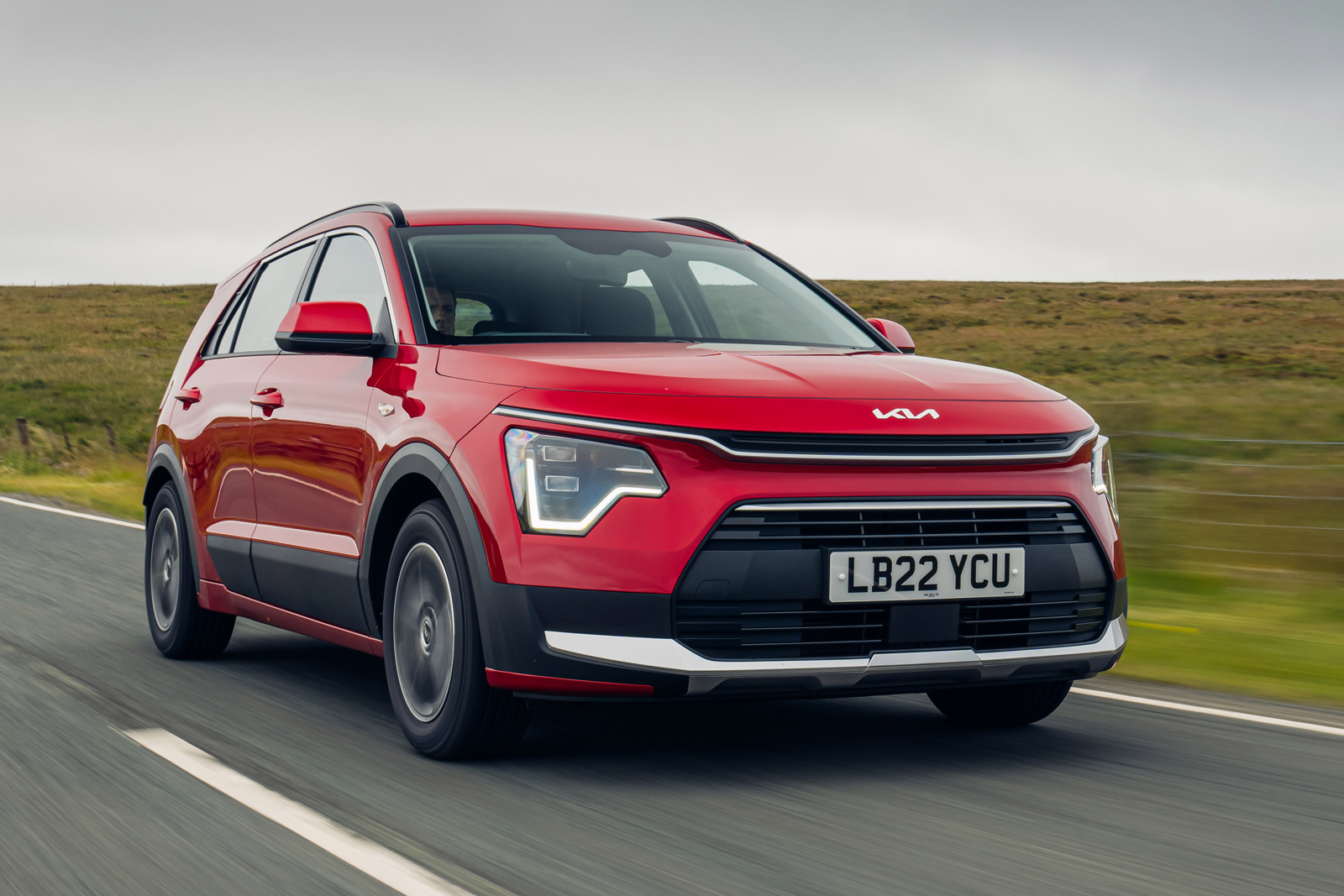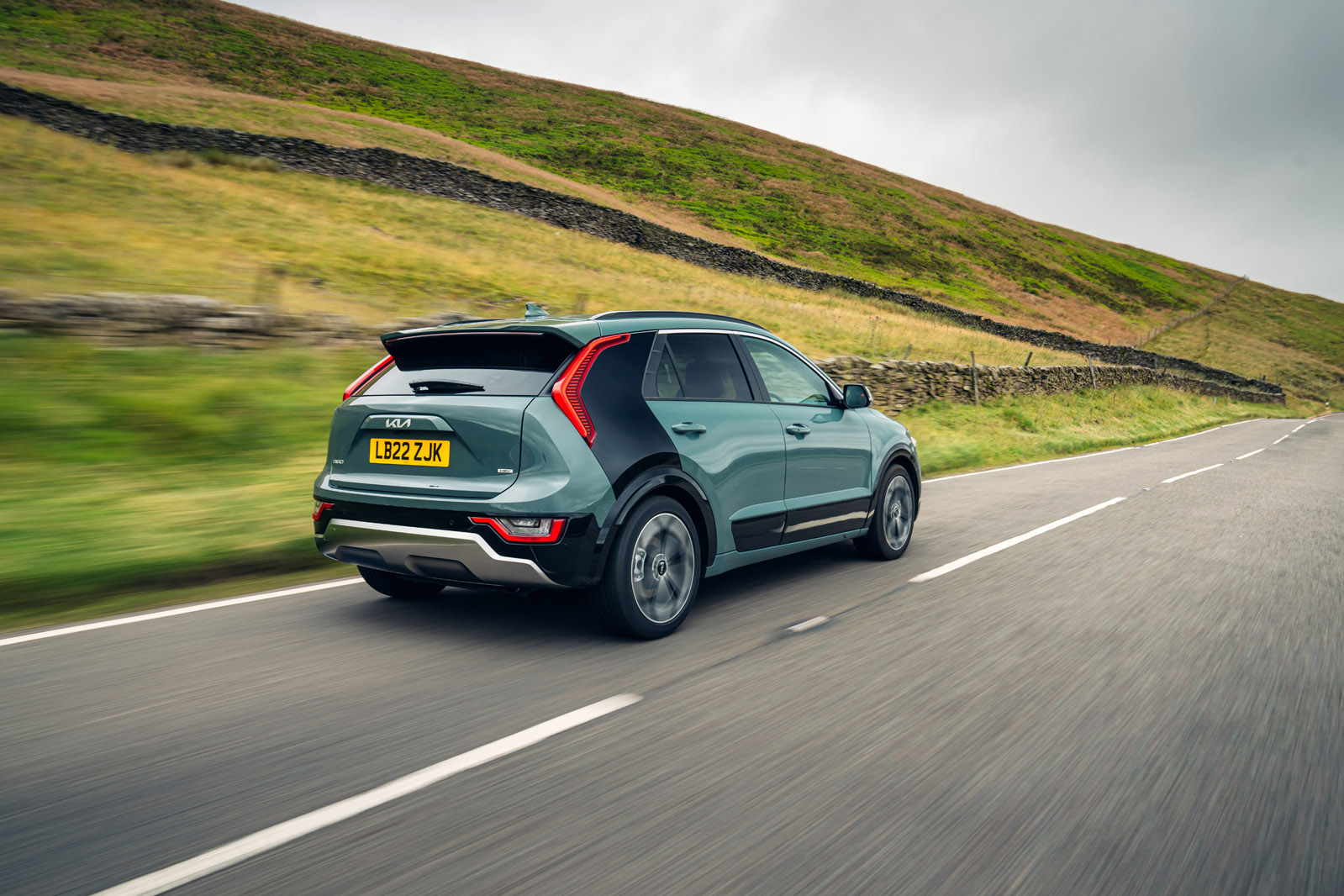Both the hybrid system and the PHEV system are based around a 1.6-litre four-cylinder petrol engine and a six-speed dual-clutch automatic gearbox driving the front wheels.
Electric assistance comes from a 1.32kWh battery and a 43bhp electric motor in the case of the hybrid or an 11.1kWh battery and an 83bhp electric motor in the PHEV.
The hybrid produces a combined 127bhp and the PHEV a combined 168bhp.
In the PHEV, the battery is up from 8.9kWh previously, so its official electric-only range now extends as far as 40 miles.
A Type 2 socket on the flank of the PHEV will suck up enough electricity for a flat to full battery in around 2.5 hours from a standard home wallbox.
From a standstill to about 40mph, the electric motor makes the Niro hybrid feel pleasantly torquey. At higher speeds, the engine has to work harder. It means the hybrid isn't exactly fast, but it's adequate, and Kia has done a good job keeping the engine noise out of the cabin. The only time the engine feels slightly coarse is when it unexpectedly has to fire up, especially from cold.
As before, you get two driving modes: Eco and Sport. The old Niro suffered from overly languid throttle calibration in Eco mode, but that has been addressed now.
Apart from having no reverse gear (that is taken care of by the electric motor), the dual-clutch gearbox is utterly conventional. In this case, there’s nothing wrong with that.
Having six gears to cycle through means it can't replicate the perfect smoothness in the HR-V and C-HR, but it does feel more direct and natural, both compared to its Japanese rivals and Renault's E-Tech solution.
If you desire a dynamic powertrain with instant responses, a mild-hybrid or pure-petrol alternative is still a better bet, because the Niro hybrid can be slow to downshift when you demand more power.
The Niro PHEV is a predictably pleasant and refined way to get about. There’s very little whine from the motor as you set off, which you can do with greater urgency than you might expect, given the moderately slovenly 0-62mph time of 9.6sec.
There’s quite a noticeable thrum as the petrol engine kicks in, but vibration is kept to a minimum and the engine stays quiet so long as you don’t rev it too hard.
Which you’re not terribly inclined to do, because, in contrast to the hybrid version, the engine sounds coarse and noisy in its PHEV application, without delivering much recompense in acceleration.
And even without the fun deterrent that this underwhelming 1.6-litre engine in this installation undoubtedly is, this simply isn’t a car that encourages spirited driving.





